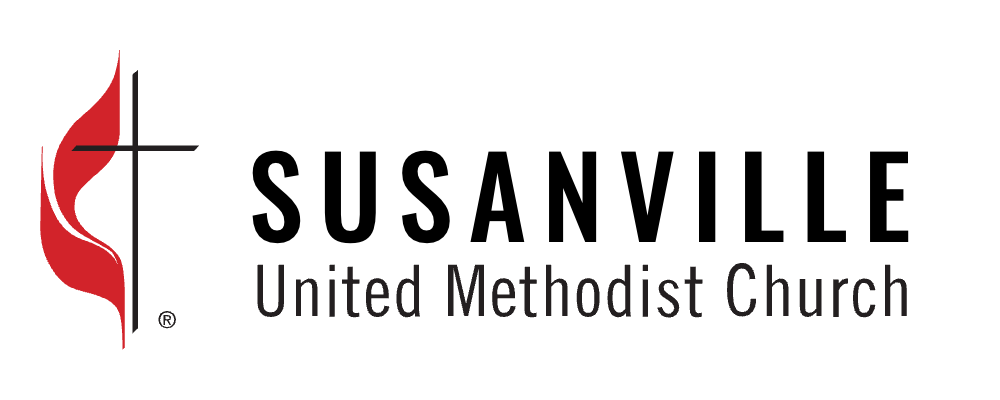Easter – The Promise of New Life – Luke 24:1-12
/Lectionary Readings for April 17, 2022 Easter Sunday, Year C
Psalm 118:1-2, 14-24 (UMH 839) v14 The Lord is my strength, and He is the reason I sing; He has been there to save me in every situation.
Acts 10:34-43 v38 God anointed Jesus of Nazareth with the Holy Spirit and with power; Jesus went about doing good and healing all who were oppressed by the devil, for God was with him.
1 Corinthians 15:19-26 v26 The last enemy to be destroyed is death.
Luke 24:1-12 v5 The women were terrified and bowed their faces to the ground, but the men said to them, “Why do you look for the living among the dead? Jesus is not here, but has risen.
John 20:1-18 v18 Mary Magdalene went and announced to the disciples, “I have seen the Lord”; and she told them that he had said these things to her.
Peace through Leadership Quotes
“People respond when you tell them there is a great future in front of you, you can leave your past behind.” ~ Joel Osteen
“Here is the amazing thing about Easter; the Resurrection Sunday for Christians is this, that Christ in the dying moments on the cross gives us the greatest illustration of forgiveness possible.” ~ T. D. Jakes
Forgiveness and hope co-labor with us as we work to create peace. People certainly responded when Jesus gave them hope for their future. Nearly all of His miracles are stories of people getting second chances. This is the Good News of Easter, the Good News of God’s resurrecting spirit. We always have an ultimate future that is unimaginably better than our present. And no matter what we have or have NOT done in our past, God never leaves our side and always offers us new possibilities going forward. What could give us more peace?!
Any time I preach or lead a group, regardless of age, I start the same way. I’m going to say three short sentences. Please repeat each sentence, with enthusiasm.
God made me. God loves me. God has plans for me.
Preface to Today’s Scripture Reading
The last chapter of all four gospels tell a story about how Jesus died but did not remain dead. Remember, since nobody had ever come back from being dead the same way Jesus did, those original witnesses did not have the word “resurrection” yet. They had to reflect on their personal experiences of what had happened, remember what Jesus had told them, and then expand their theology to make space for this new and dramatically different reality. Their faith transformed as much as Jesus did.
All four gospels tell the story differently. Matthew ends with the 11 remaining disciples meeting Jesus whose last words are what we often call the Great Commission (Matthew 28).
The original ending of Mark (Mark 16) concludes with the women finding a tomb with no Jesus but one angelic figure. This terrifies them and they run away. The end. It’s a lousy ending if you’re trying to convey hope. So… later authors added all sorts of great details to Mark’s ending (verses 9-20) to change it from a horror film to a Hallmark movie.
John (John 20) is perhaps my favorite version of the Easter story; it’s passionate and brutally intimate – realistic in both ways.
All four are great stories, great witnesses to the same event. And all four may prod you to ask, “Hey… What about that core group of women who traveled with Jesus during His ministry, followed Him to the cross, were the first to witness the empty tomb, AND were the first to meet the resurrected Jesus… Why weren’t any of them chosen as the 12th disciple to replace Judas?” We don’t know. But that great question reminds us to not overlook qualified people as we consider future leaders!
Let’s open our ears, minds, and hearts as we hear Luke’s version of the resurrection story.
Read Luke 24:1-12.
The emotional wounds of our childhood run deep and often take a lifetime to heal – if they ever do. Such is my relationship with Easter Sunday; it’s one of the two Sundays I least like. Heads up… please do not hold the following against me; I am softening in my old age.
As a very young child in the Deep South (Augusta, GA), I clearly remember what was most important about Easter Sunday: getting candy, because any theology that results in me getting chocolate between meals is great theology!
When I was 12 or 13, I clearly remember getting in a nearly knock-down, drag-out fight with my mother. You can only imagine what she may have been thinking as I announced…
Me: I am not going to church today. I’ll go any other day, but not today.
Mom: (Taking a deep breath…) It’s Easter; get in the car.
Me: The only thing important about today is telling every little girl and lady, “What a beautiful new dress you’re wearing today. And it matches your hat; how lovely!” God did not drag Jesus back from the pit of hell so y’all could have an excuse to buy new dresses. Why aren’t we focused on what God is doing in our lives?!?
Fortunately, God’s Spirit quickly moved deep within my mother’s heart and soul, and she did not beat me to a pulp. For that, I give thanks!
Fast forward 35 or so years to when I began attending Reno First UMC downtown. The week before Easter, they decorated the entire building with butterflies and explained how they represented the miraculous transformation of Jesus’ resurrection and our own spiritual journey. My first reaction was, “Well that’s goofy,” and by goofy I mean, “That information and understanding is new to me and was not part of my childhood so I find it questionable.”
Since then, butterflies have become my favorite symbol of our faith in the miraculous, a symbol of our hope for beautiful transformation, the necessity of having to patiently wait for the transformation to develop, AND the necessity of living into our potential and our limits. Caterpillars crawl, butterflies fly. If a caterpillar tried to fly, it would fail and perhaps fall to its death. If a butterfly only crawled, flowers would not get pollinated and fruits would not grow. Each must live into its role in the circle of life.
We all have caterpillar, chrysalis, and butterfly seasons in our lives. About this time each year, classrooms and households will often find a chrysalis in the wild, then bring it home so young kids can watch the butterfly hatch and fly away. We use this annual ritual to help children learn – and perhaps remind ourselves – about the mystery and power of transformation.
This past Tuesday, our Bible Study group talked a lot about the power and necessity of rituals. We discussed how rituals shape our faith and help us connect with God and each other. Easter is an annual ritual that teaches and reminds us about God’s power to transformatively create and re-create beyond our ability to fully understand how or why. Our church’s rituals include Holy Communion once a month and saying the Lord’s Prayer each week. These and other rituals work together to inform and guide our individual and collective faith journeys. They connect us with God and each other.
In today’s reading, the women and the men all represented different walks of life and different faith journeys. But they were all united through their shared experiences of Jesus’ ministry, execution, resurrection, and ascension. These experiences fundamentally changed them, changed how they lived, changed how they spent their time and money, changed their understanding and expression of what it meant to love God, love themselves, and love others. And the world has never been the same.
Like the women and men who followed Jesus, the people who call our church “home” come from different backgrounds and faith journeys, but we are all united through our faith. Our church family is FULL of stories of transformed hearts, minds, and souls. Those precious stories inspire the rest of us – including myself – to notice how God is regularly moving in our own lives.
Our celebration of Easter begs the questions, “What’s YOUR story of transformation? Where are you IN your story of transformation?”
As we dig into and wrestle with these questions, we will often find God creating new life within us. And like the butterfly, we begin to realize that we are not who we once were – individually or as a community of faith. We have become new creations with new abilities so that we can embrace the new opportunities God puts before us.
Recalling the emotions of the women who discovered the empty tomb, Easter can be both a terrifying and exciting time as we notice God creating new life in and around us. This growth is the continuation of our history and a continuation of our ongoing experiences as we work to share God’s love with others and welcome them into the Kingdom of God. Perhaps these butterflies will remind us how change can be an incredible gift from our Creator.
Amen? Amen!

